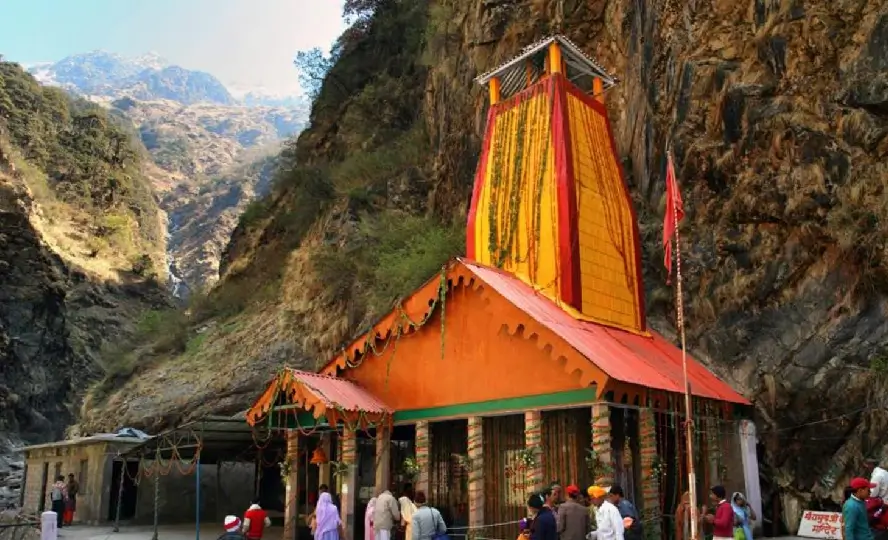The Char Dham Yatra in Uttarakhand is one of India’s most sacred pilgrimages. Every year, lakhs of devotees travel to the four holy shrines—Yamunotri, Gangotri, Kedarnath, and Badrinath—nestled high in the Himalayas. These shrines are not only religiously significant but also breathtakingly beautiful, set amid snow-capped peaks, gushing rivers, and serene valleys.
For most pilgrims, understanding the route map of Char Dham Yatra Uttarakhand is crucial. Since these shrines are scattered across Uttarakhand’s rugged terrain, knowing the path, connectivity, and nearby halts makes the journey smoother and more fulfilling.
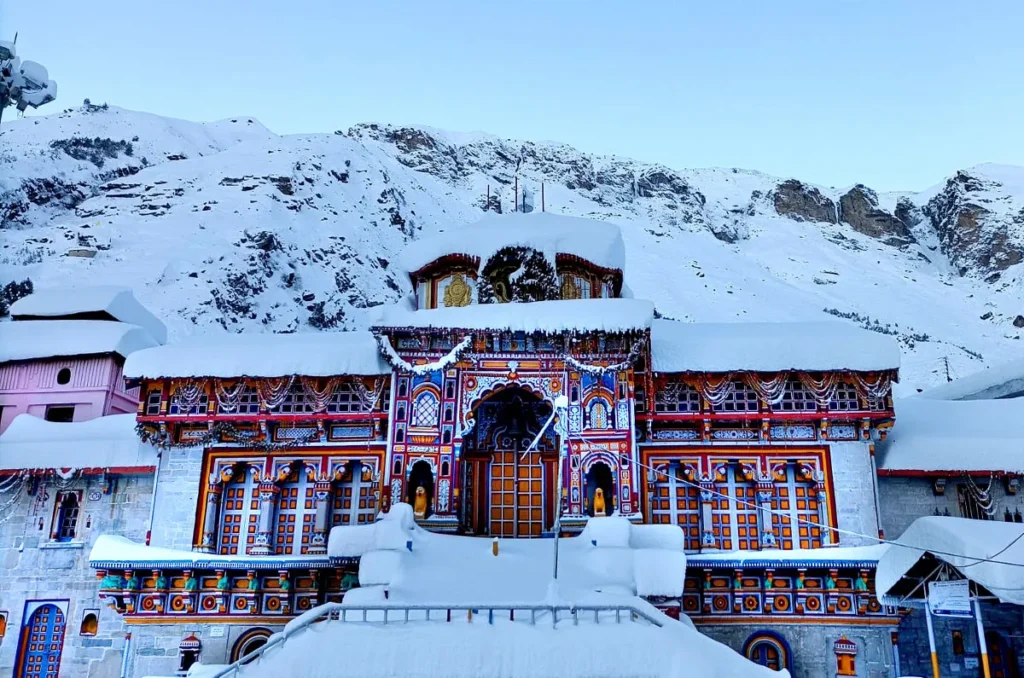
Starting Point: Haridwar / Rishikesh
Almost all Char Dham yatras begin from Haridwar or Rishikesh, the twin gateways to the Himalayas. Both cities are well-connected by:
- Railways: Haridwar has direct train connections with major cities like Delhi, Lucknow, and Kolkata.
- Air: Jolly Grant Airport (Dehradun) is about 35 km from Rishikesh.
- Roads: Excellent road connectivity from Delhi, Meerut, and Dehradun.
From here, pilgrims usually travel by buses, shared jeeps, or private cars arranged by tour operators. Some even hire tempo travelers for groups.
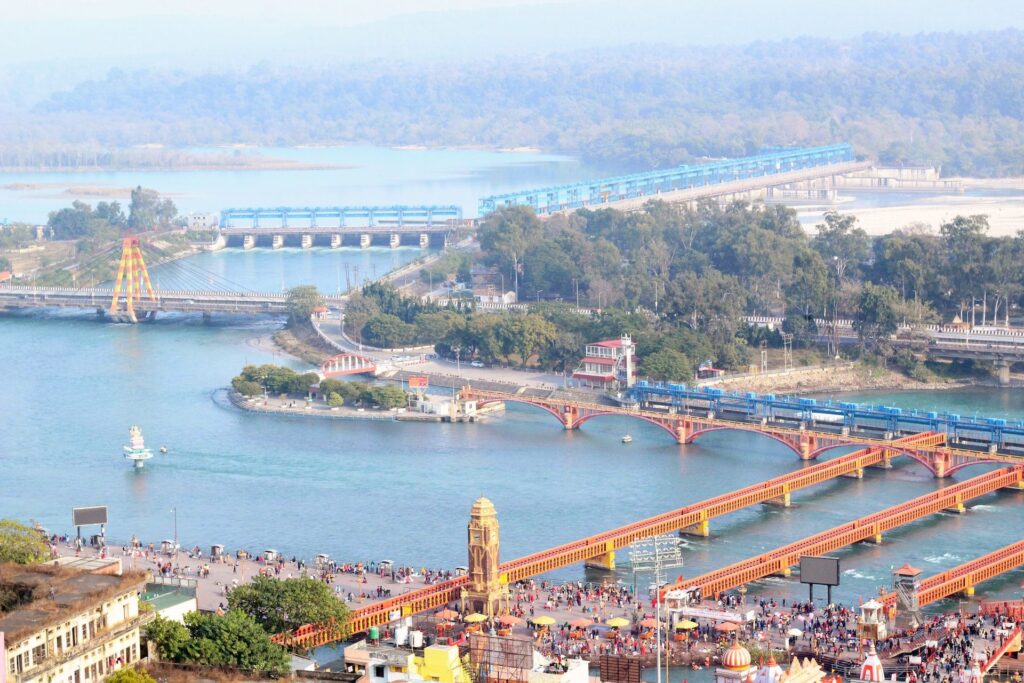
The Traditional Char Dham Route
The route usually follows a clockwise direction, which is considered auspicious:
1. Yamunotri – The Source of River Yamuna
- Route: Haridwar → Rishikesh → Barkot → Janki Chatti → Yamunotri.
- Distance: Around 210 km from Rishikesh to Janki Chatti, then a 5 km trek to Yamunotri temple.
- Key Stops: Dehradun, Mussoorie, Barkot.
- Highlights: Hot water springs at Janki Chatti, lush meadows, and the sacred Yamuna river emerging from glaciers.
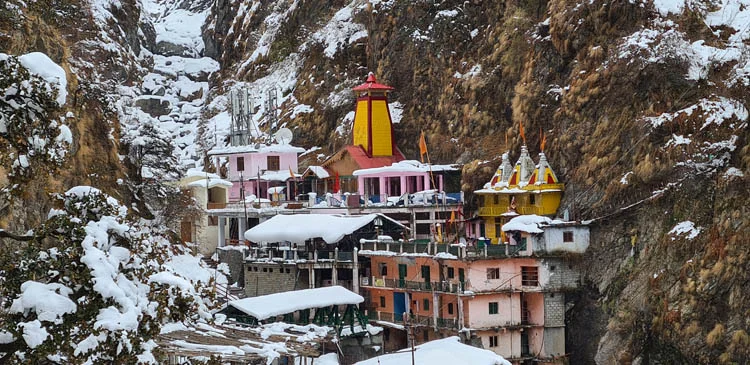
2. Gangotri – The Source of River Ganga
- Route: Yamunotri → Barkot → Uttarkashi → Harsil → Gangotri.
- Distance: Around 230 km by road.
- Key Stops: Uttarkashi (a popular base for Gangotri), Harsil (famous for apple orchards).
- Highlights: The temple dedicated to Goddess Ganga, Bhagirathi river, and majestic Himalayan scenery.
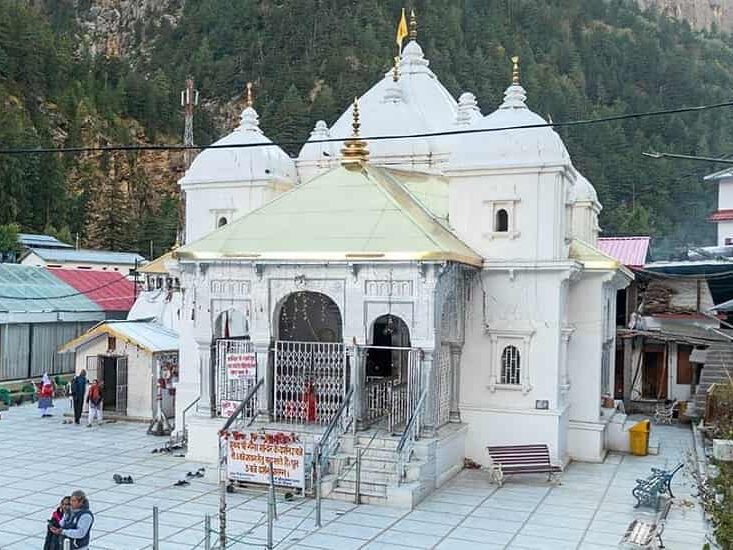
3. Kedarnath – The Abode of Lord Shiva
- Route: Gangotri → Uttarkashi → Guptkashi → Gaurikund → Kedarnath.
- Distance: About 250 km road journey till Gaurikund, followed by a 16 km trek to Kedarnath.
- Key Stops: Guptkashi (Ardh Narishwar Temple), Sonprayag, Rambara (on trek route).
- Highlights: Kedarnath temple surrounded by snow peaks, Mandakini river, and the spiritual energy of Lord Shiva’s jyotirlinga.
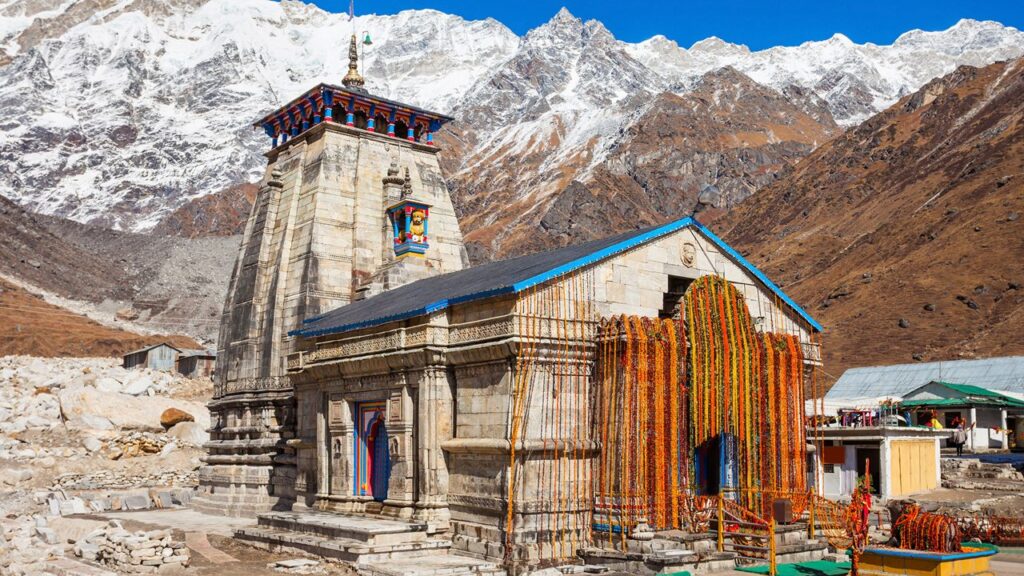
4. Badrinath – The Sacred Seat of Lord Vishnu
- Route: Kedarnath (Gaurikund) → Rudraprayag → Joshimath → Badrinath.
- Distance: Around 230 km by road.
- Key Stops: Rudraprayag (confluence of Alaknanda & Mandakini rivers), Joshimath (base for Auli and skiing).
- Highlights: The colorful Badrinath temple, Neelkanth peak backdrop, and hot springs of Tapt Kund.
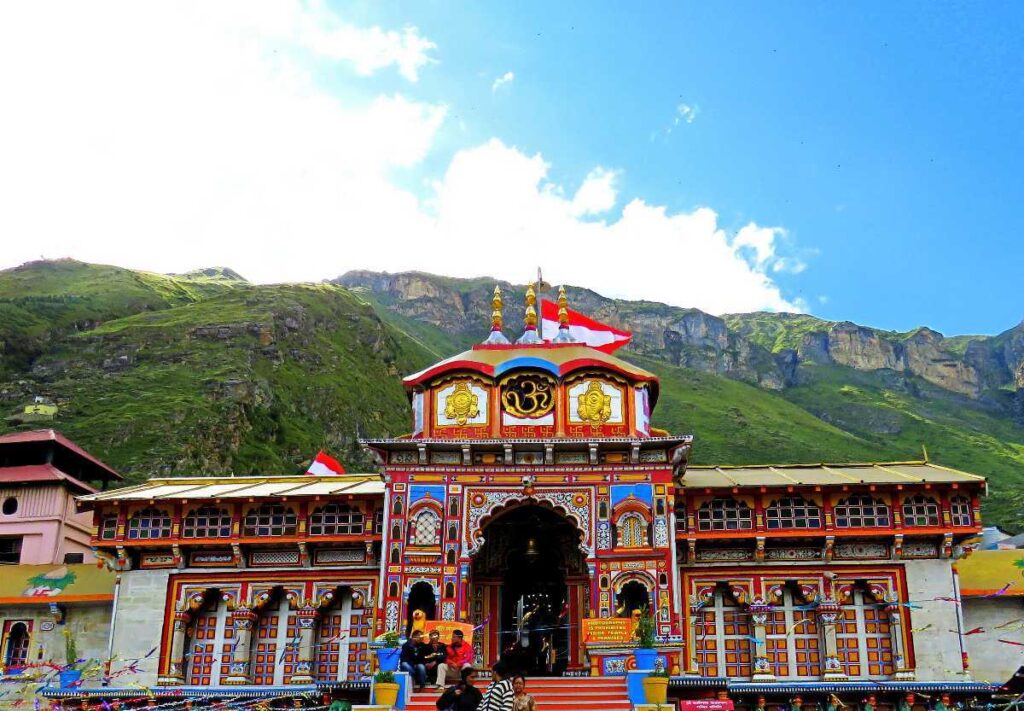
Route Map in Short (Sequential Flow)
- Haridwar / Rishikesh → Yamunotri
- Yamunotri → Gangotri
- Gangotri → Kedarnath
- Kedarnath → Badrinath
- Return via Rishikesh / Haridwar
This is the standard clockwise route, which ensures that pilgrims follow tradition and cover all four shrines in the correct sequence.
Key Road Distances for Easy Planning
- Rishikesh to Yamunotri: ~210 km (till Janki Chatti)
- Yamunotri to Gangotri: ~230 km
- Gangotri to Kedarnath: ~250 km (till Gaurikund)
- Gaurikund to Kedarnath: 16 km trek
- Kedarnath to Badrinath: ~230 km
- Badrinath to Rishikesh: ~300 km
Char Dham Route Map (Explained in Simple Words)
Imagine the Char Dham route as a loop in the Garhwal Himalayas. You begin from the plains (Haridwar/Rishikesh), climb north to Yamunotri, head eastwards to Gangotri, swing southwest to Kedarnath, and finally turn northeast to Badrinath before returning south.
It’s like drawing a rough oval on the map of Uttarakhand, with each shrine at a corner of the oval.
Transportation Options on the Route
- By Road: The most common option. Buses and taxis are available from Rishikesh, Haridwar, and Dehradun.
- By Helicopter: For those short on time or unable to trek, helicopter services from Dehradun and Phata offer VIP darshans. Some operators even provide Same Day Char Dham Yatra packages by air.
- By Trek: Yamunotri and Kedarnath require trekking. Ponies, palanquins, and even helicopter drops (for Kedarnath) are available.
- By Rail: The nearest major stations are Haridwar and Rishikesh. For Kedarnath, a railway line up to Sonprayag is under construction.
Why the Route Order Matters
The order—Yamunotri → Gangotri → Kedarnath → Badrinath—is not random. It is based on tradition and faith. The yatra starts with Yamuna and Ganga, symbolizing purification through holy waters, before reaching Shiva (Kedarnath) and ending with Vishnu (Badrinath), signifying liberation.
Planning the Complete Char Dham Yatra
A typical yatra plan looks like this:
| Day | Destination | Activity | Distance |
|---|---|---|---|
| 1 | Haridwar/Rishikesh → Barkot | Drive, Overnight stay | ~210 km |
| 2 | Barkot → Yamunotri → Barkot | Trek and Darshan | 5 km trek |
| 3 | Barkot → Uttarkashi → Harsil | Scenic drive | ~140 km |
| 4 | Harsil → Gangotri → Harsil | Darshan and return | ~30 km each way |
| 5 | Harsil → Guptkashi → Gaurikund | Drive and overnight | ~150 km |
| 6 | Gaurikund → Kedarnath → Gaurikund | Trek and Darshan | 16 km trek each way |
| 7 | Gaurikund → Rudraprayag → Joshimath | Scenic drive | ~200 km |
| 8 | Joshimath → Badrinath → Joshimath | Darshan and sightseeing | ~30 km each way |
| 9 | Joshimath → Rishikesh/Haridwar | Return journey | ~300 km |
Facilities and Halts Along the Route
- Hotels and Guesthouses: Found in Barkot, Uttarkashi, Guptkashi, Rudraprayag, Joshimath.
- Food: Mostly vegetarian, with plenty of dhabas serving simple thalis and tea.
- Medical Facilities: Basic hospitals and medical camps at major halts.
- ATMs and Fuel Stations: Available at larger towns but rare in remote stretches, so plan ahead.
Best Time to Travel
Choosing the right season is crucial for a safe and enjoyable Char Dham Yatra:
- April to June: Spring season brings pleasant weather, clear skies, and flowers blooming along the valleys. Roads are generally accessible, and the snow on the peaks adds to the scenic beauty.
- September to November: Post-monsoon season is ideal as rivers are full, waterfalls are in their glory, and skies remain clear. This is also the peak yatra season for pilgrims.
- Avoid Monsoon (July–August): Heavy rains often trigger landslides, slippery paths, and roadblocks. It’s risky for trekking to Kedarnath or Yamunotri.
- Winter (December–March): Kedarnath and Yamunotri are closed due to heavy snowfall. Only Badrinath and Gangotri remain partially accessible, making it less ideal for a full Char Dham trip.
Safety Tips for Pilgrims
The Char Dham Yatra is spiritually fulfilling but physically demanding. Safety should be a priority:
- Acclimatize Gradually: The high-altitude shrines like Kedarnath can cause mild altitude sickness. Take your time to adjust.
- Carry Essentials: Warm clothing, sunscreen, sunglasses, water bottles, and energy snacks.
- Use Reliable Transport: Only use registered taxis, buses, or jeeps. Avoid overcrowded or unlicensed vehicles.
- Hire Local Guides: They know the terrain, weather patterns, and alternate routes.
- Trek Responsibly: For Yamunotri and Kedarnath, don’t rush. Use ponies or palanquins if needed.
- Medical Preparedness: Keep basic medicines handy. Know the location of nearest hospitals along the route.
- Stay Updated: Weather and road conditions change rapidly; check updates before starting daily journeys.
Accommodation Options Along the Route
Pilgrims have multiple lodging choices depending on budget and preference:
- Yamunotri: Guesthouses in Barkot and Janki Chatti, limited hotels near the base of the trek.
- Gangotri: Lodges and ashrams in Uttarkashi and Harsil. Harsil has scenic resorts overlooking the Bhagirathi River.
- Kedarnath: Basic dharamshalas in Gaurikund and Rambara; post-trek hotels near Kedarnath. Some helicopter services include VIP stays.
- Badrinath: Government-run guesthouses, hotels, and ashrams in Joshimath and Badrinath town.
Pro Tip: Booking in advance during peak season (May–June, September–October) is recommended, especially for Kedarnath and Badrinath.
Nearby Attractions Along the Char Dham Route
The yatra itself is spiritually enriching, but the surrounding regions offer breathtaking natural and cultural experiences:
1. Valley of Flowers National Park
A UNESCO World Heritage site near Joshimath, this valley is famous for alpine flowers, rare medicinal plants, and trekking trails. It’s often combined with Hemkund Sahib for an extended spiritual-nature trip.
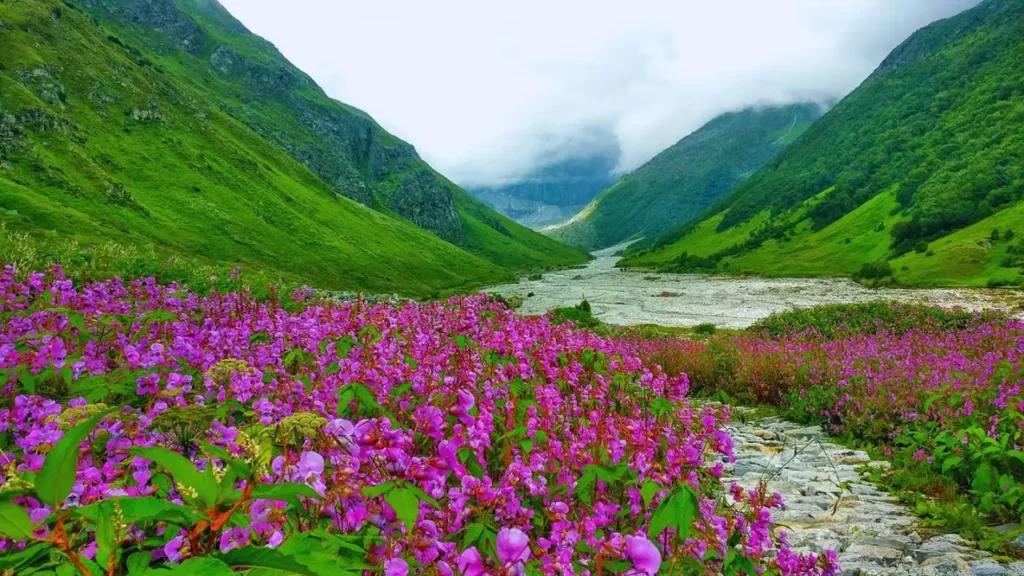
2. Hemkund Sahib
Sikh pilgrims visit this high-altitude gurudwara, nestled at 4,632 meters. The trek offers stunning glacier views, and the site shares a spiritual ambiance similar to the Char Dham shrines.
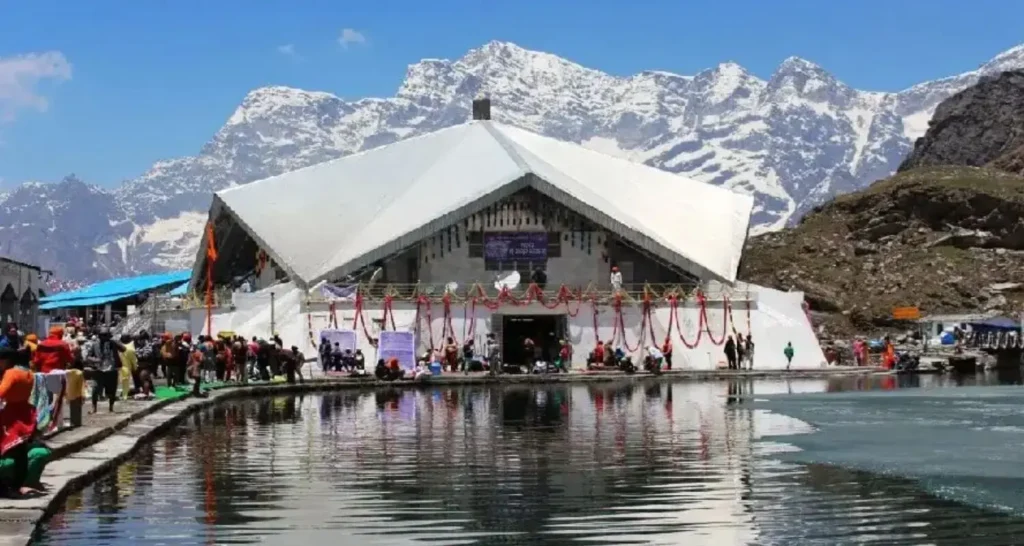
3. Rudraprayag and Devprayag
These confluences of rivers are not just scenic but also spiritually significant. Devprayag marks the official origin of the holy Ganga.
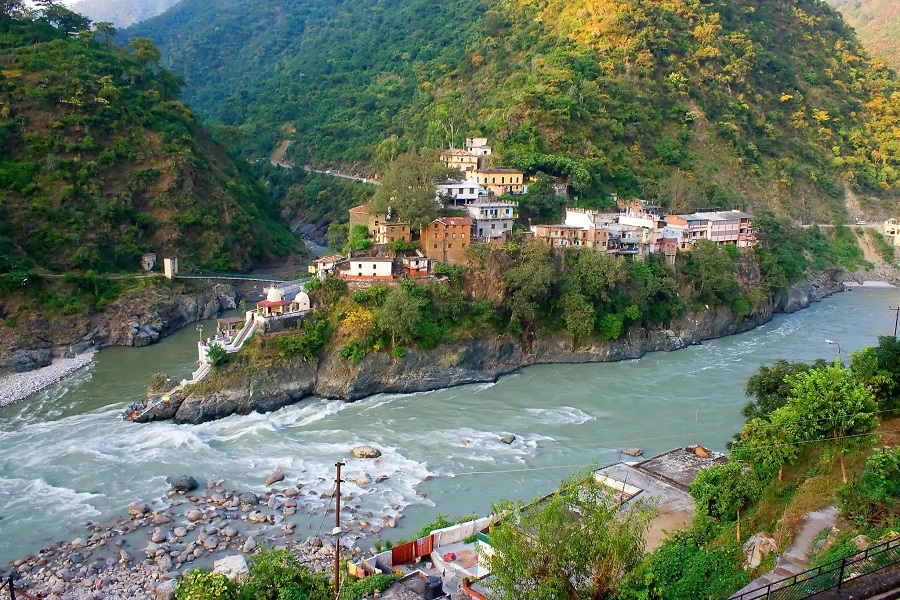
4. Joshimath
Apart from being a gateway to Badrinath, Joshimath is known for Auli, a winter skiing destination, and ancient temples.
5. Harsil and Barkot
Apart from being base points for Gangotri and Yamunotri, these towns are perfect for nature lovers who enjoy Himalayan meadows and apple orchards.
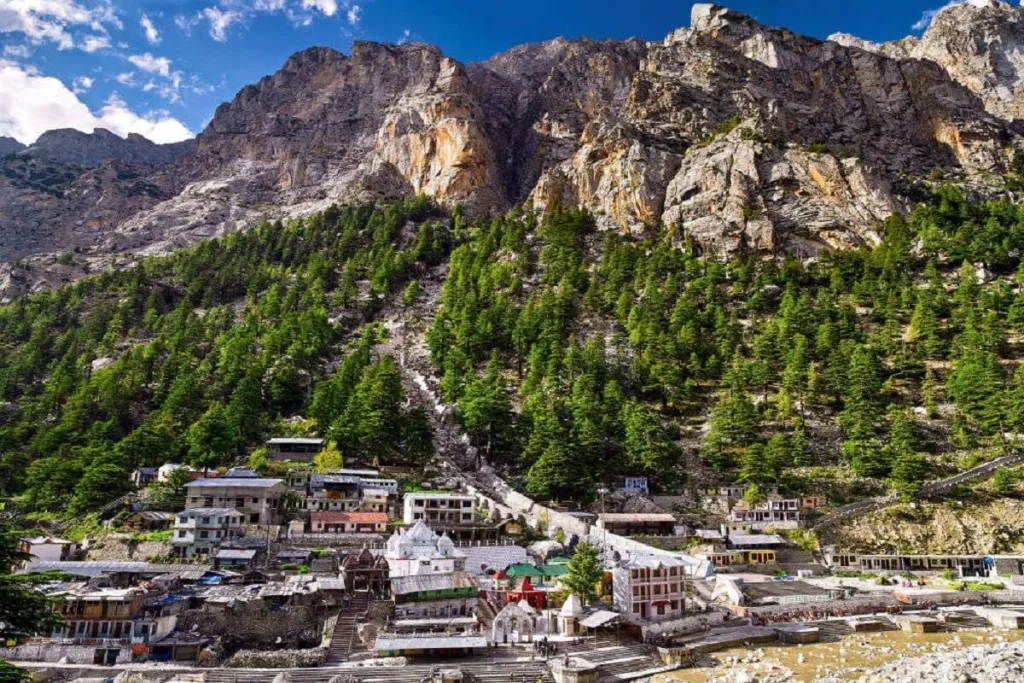
FAQ Section
Q1: What is the Char Dham Yatra in Uttarakhand?
A: Char Dham Yatra is a sacred pilgrimage covering four holy shrines: Yamunotri, Gangotri, Kedarnath, and Badrinath in Uttarakhand, attracting thousands of devotees annually.
Q2: What is the best route for Char Dham Yatra?
A: The most popular route is Yamunotri → Gangotri → Kedarnath → Badrinath, typically starting from Haridwar/Rishikesh.
Q3: What is the total distance covered in the Char Dham Yatra?
A: The complete yatra covers approximately 800–900 km by road, depending on the route chosen.
Q4: How long does the Char Dham Yatra take?
A: By road, a complete Char Dham Yatra usually takes 8–12 days for pilgrims traveling comfortably.
Q5: Can I travel to Char Dham by helicopter?
A: Yes, helicopter services are available for Yamunotri, Gangotri, Kedarnath, and Badrinath, making the journey faster and suitable for senior citizens or those with limited time.
Q6: When is the best time to visit Char Dham?
A: The ideal period is May to October. Pilgrimage is closed during heavy snowfall in winter (November–April).
Q7: What is the nearest airport for Char Dham Yatra?
A: Jolly Grant Airport, Dehradun, is the closest airport. From here, Haridwar and Rishikesh are connected by road.
Q8: Is the Char Dham Yatra safe for senior citizens?
A: Yes, with proper planning. Helicopter services, pony rides, and guided tours make the yatra senior-friendly and comfortable.
Q9: Are permits required for Char Dham Yatra?
A: For Kedarnath, pilgrims need online registration, while others like Yamunotri, Gangotri, and Badrinath require no special permits.
Q10: What should I carry for Char Dham Yatra?
A: Essentials include warm clothing, trekking shoes, ID proof, medication, yatra registration slip (for Kedarnath), and snacks.

